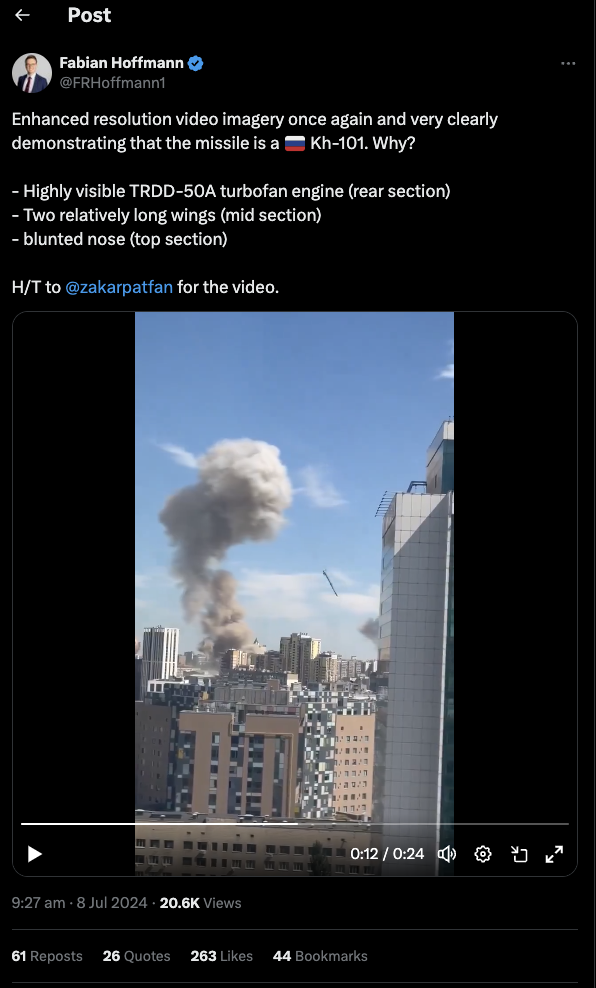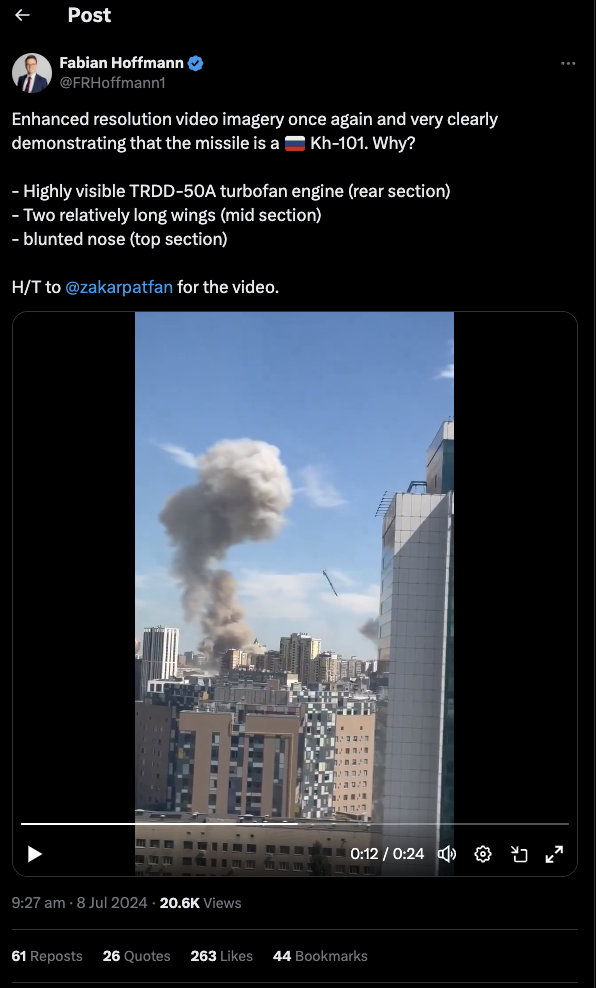
An analysis of open source evidence, as well as missile experts, have pointed to a R 2024-7-9 22:32:21 Author: www.bellingcat.com(查看原文) 阅读量:13 收藏
An analysis of open source evidence, as well as missile experts, have pointed to a Russian launched Kh-101 cruise missile being the weapon that struck a children’s hospital in Kyiv, debunking claims from pro-Russian accounts and actors that denied responsibility and sought to shift the blame for the incident on to Ukraine.
The July 8 attack on the Okhmatdyt Children’s Hospital killed at least three children and injured 16 others, according to the Security Services of Ukraine (SBU). However, the full toll of dead and injured remains unknown with individuals reported to still be trapped under rubble.
In the aftermath of the strike, several social media accounts known for spreading disinformation — including that of the Russian Ministry of Foreign Affairs — began to claim that the missile was American-made and that it had been launched from a Ukrainian anti-aircraft missile system.
Yet an analysis conducted by Bellingcat using social media footage as well as a 3D model of the missile, all point to the munition being a Russian Kh-101 cruise missile. The analysis is in line with the view of experts, including Fabian Hoffman, a doctoral research fellow at the University of Oslo who specialises in missile technology.
Dr. Jeffrey Lewis, a nuclear weapons and missile expert at the Middlebury Institute of International Studies at Monterey in California, similarly concluded in an email to Bellingcat that a Kh-101 missile could be seen in footage of the attack posted to social media sites.
Bellingcat also tested an alternative theory floated online that the missile was a US-made AIM-120, but found no evidence for this.
The hospital attack came as part of a wider Russian missile barrage that hit civilian targets elsewhere in Ukraine, including the city of Dnipro. According to the Ukrainian Air Force, the attack began at approximately 10:00 AM local time and involved at least 36 missiles, including 13 Kh-101 cruise missiles.
Analysing the Missile Strike Footage
Shortly before noon, reports began to surface claiming that there had been an explosion at the Okhmatdyt Children’s Hospital. These reports were followed by video footage posted to Telegram showing a missile impacting the hospital.
The video clearly captured the missile that impacted the hospital. The following frames of the missile were taken from the video above.
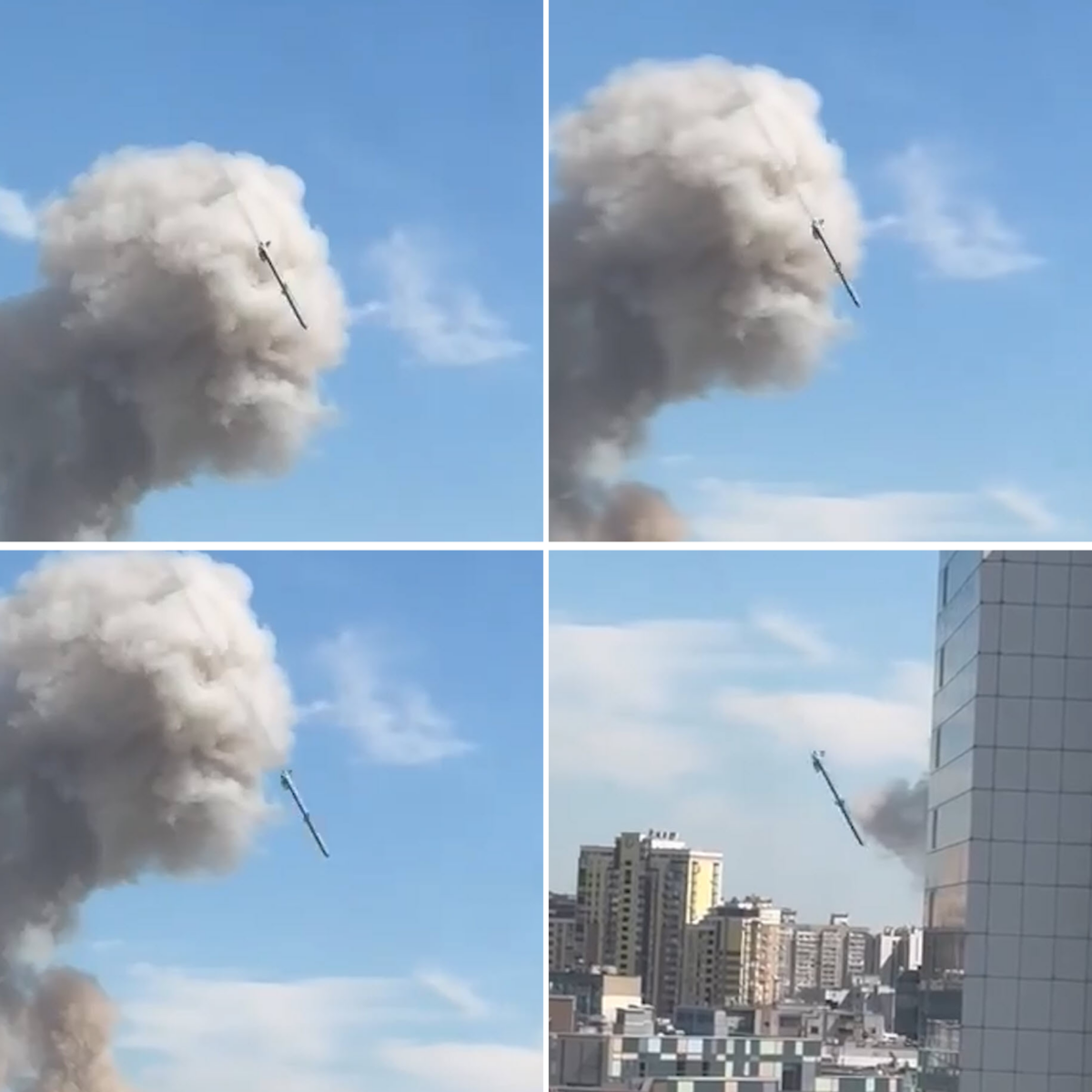
The missile exhibits several characteristics, including the presence of what appears to be a jet engine at its rear as well as two short wings near the middle of the missile.
These are distinct features of the Kh-101, a cruise missile used exclusively by the Russian armed forces. A comparison of a screenshot of the missile that hit the hospital with a 3D rendering of a Kh-101 missile shows that the two indeed share these features.
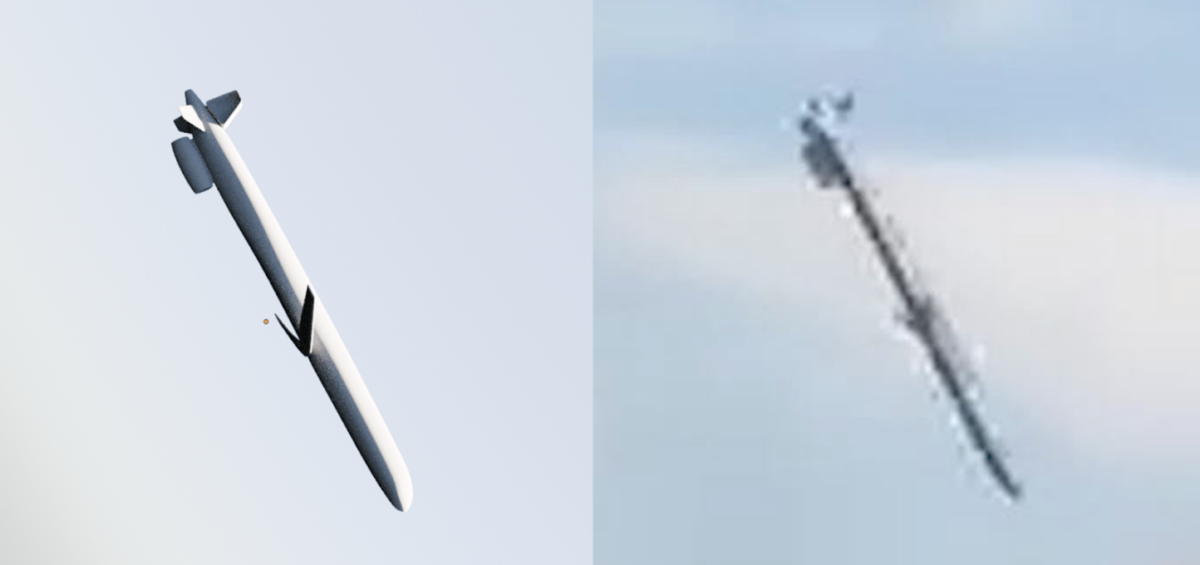
A video overlay of the two images above also demonstrates the matching the features and proportions of the 3D model of the Kh-101 and the missile that hit the hospital.
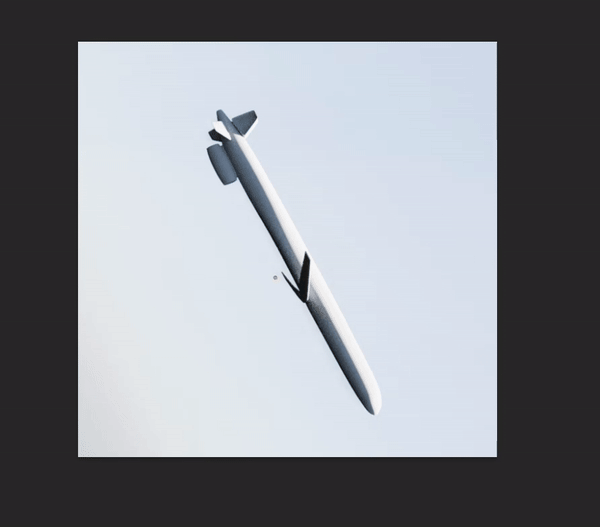
Missile Remnants
After the strike, the SBU released three images claiming to show remnants of the munition that hit the hospital. They stated that preliminary findings indicated it was a Kh-101, which appeared to tally with the aforementioned video footage.
The images showed what appeared to be a support spar and engine panel. Manuals and imagery that documented previous Kh-101 strikes detailed similar remnants.
For example, the support spar in the image below appeared similar to one found in a 2022 Ukrainian Territorial Defense Forces’ identification manual (page 28) which detailed a previous Kh-101 strike.
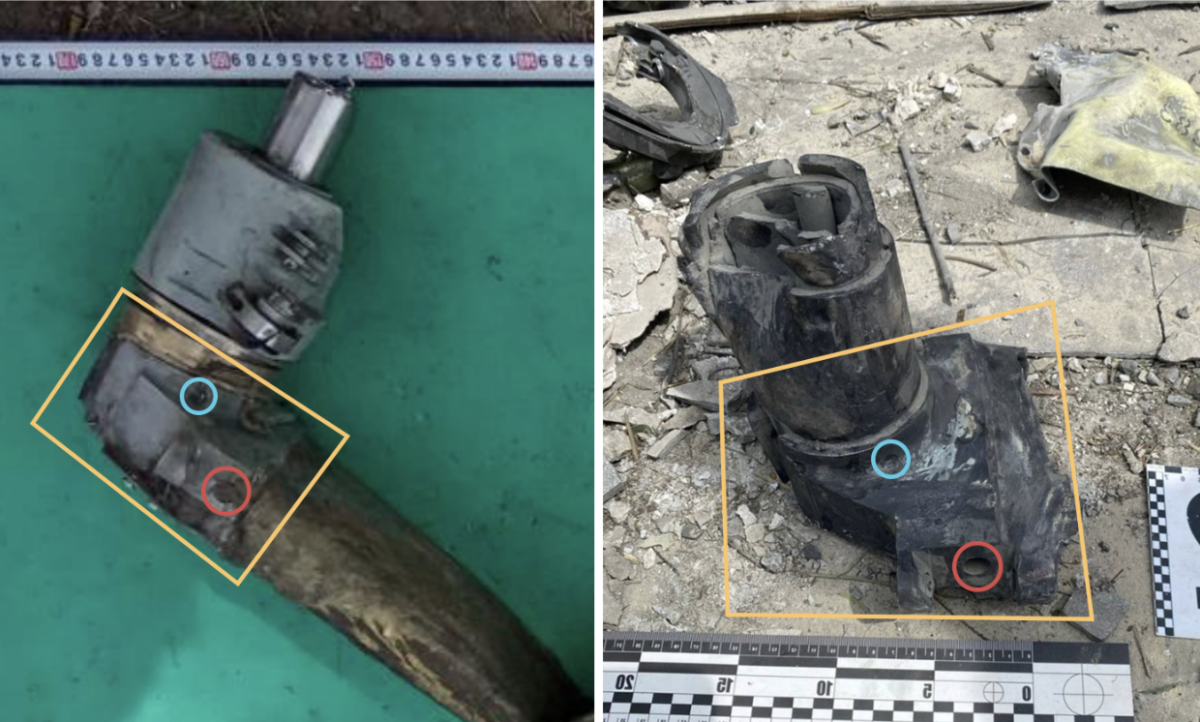
Another image showing a yellow panel with the numbers “2983” appears to match with what the same identification manual describes as the Kh-101’s engine cover (page 28, figure 22). The reference image from the manual has another piece that gives a more complete look at the serial number.
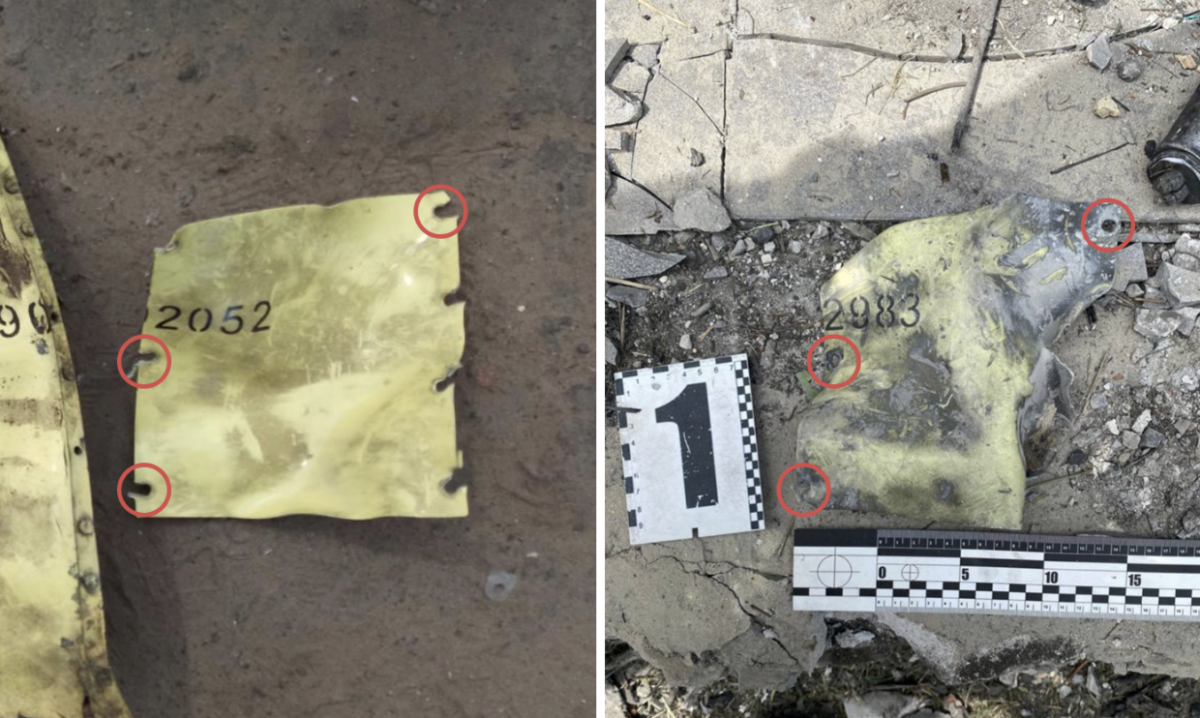
Additionally, one of the images released by the SBU shows markings on another remnant of the missile that hit the hospital. These markings include the numbers “840708036”, “~234452”, and “45 • 14” . Similar markings using this same format are also visible on a remnant from a Kh-101 that was descibes as having been shot down over Ukraine on December 29, 2023. Some components were turned into a keychain and put up for sale on a website called AirHubStore:
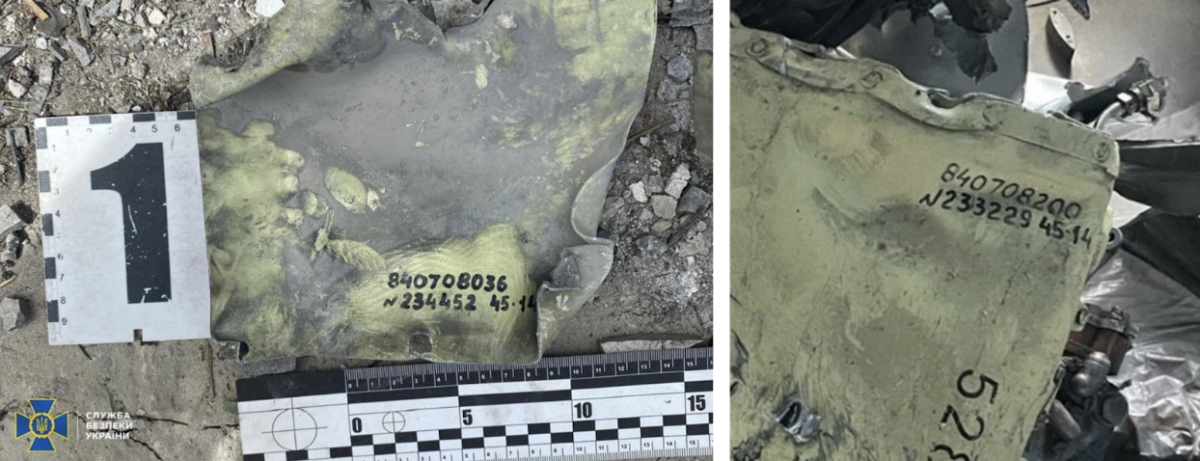
It is important to note, however, that none of the SBU images were geolocatable on their own given they were closed cropped and did not show surroundings with identifiable features.
This complicated verifying that these parts had indeed been at the scene.
However, images posted later by the Gazeta.UA news website were geolocatable to the hospital and appeared to show the same munition remnants as detailed in the SBU posts. For example the support spar can be seen under the arm of an investigator below.
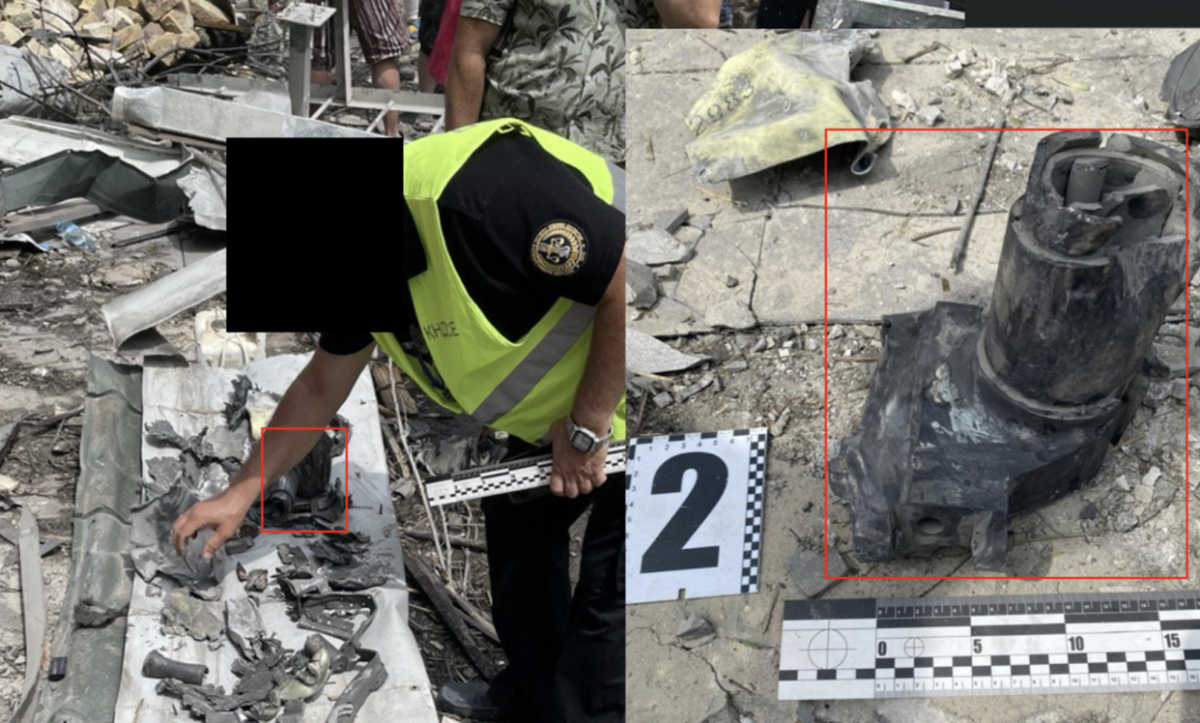
The engine panel, meanwhile, can also be seen and its shape matched to the item that can be seen in the earlier SBU picture.
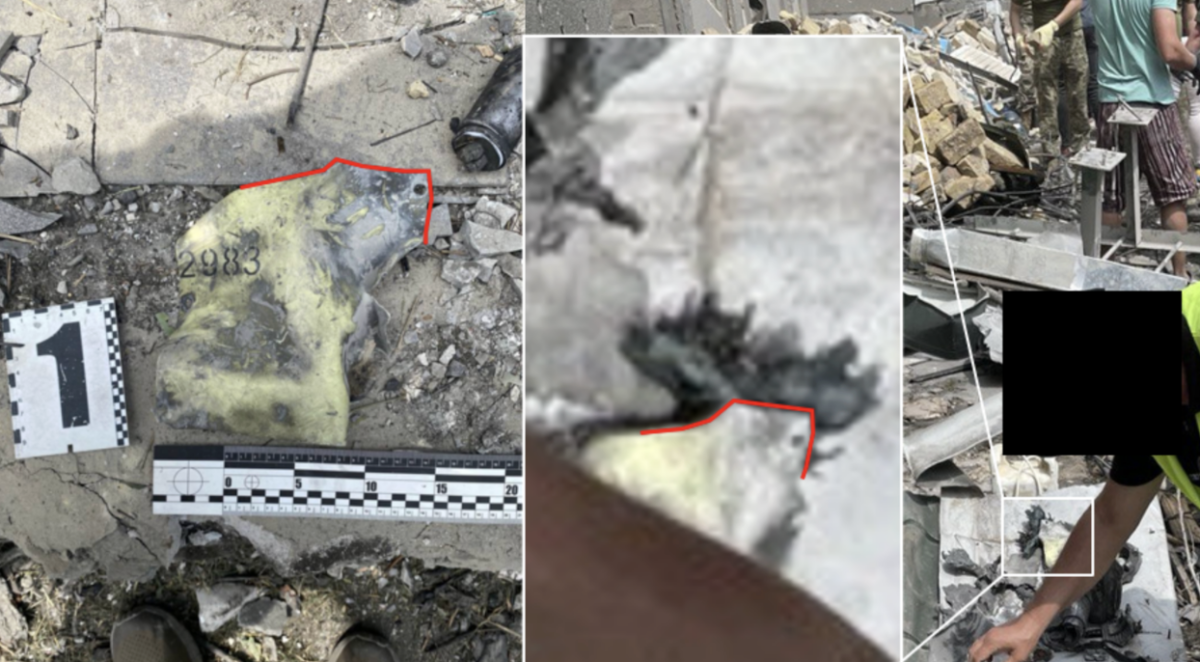
The full Gazeta.ua image can be geolocated just a few metres west of the damaged hospital building (50.450632, 30.481437) thanks to other images and videos from the scene captured by Reuters and the Kyiv Post.
For example, this video posted by the Kyiv Post showed another angle from where the Gazeta.ua image was taken. Bellingcat has blurred the face, but the same individual in military fatigues can even be seen in each respective publication’s footage, as well as the same damaged material.
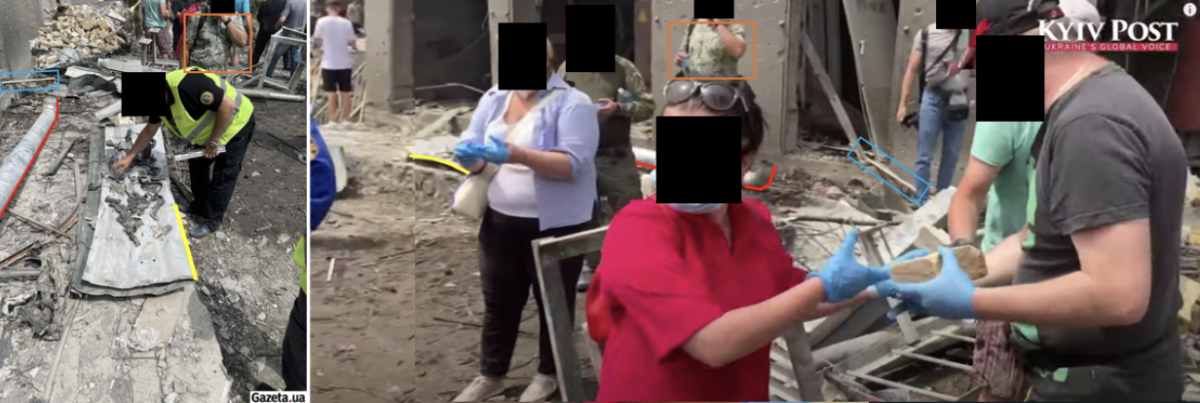
Right: Stitched footage showing the location (marked in yellow) where missile debris was photographed by Gazeta.ua. A broken pipe, metal sheet and people at the scene were matched with the Gazeta.ua image (left). (Source: Youtube/ Kyiv Post )
Similarly, a Reuters photo from the scene captures the same pattern of damage that can be seen in the Gazeta.ua image that shows the same missile remnants as those posted by the SBU.
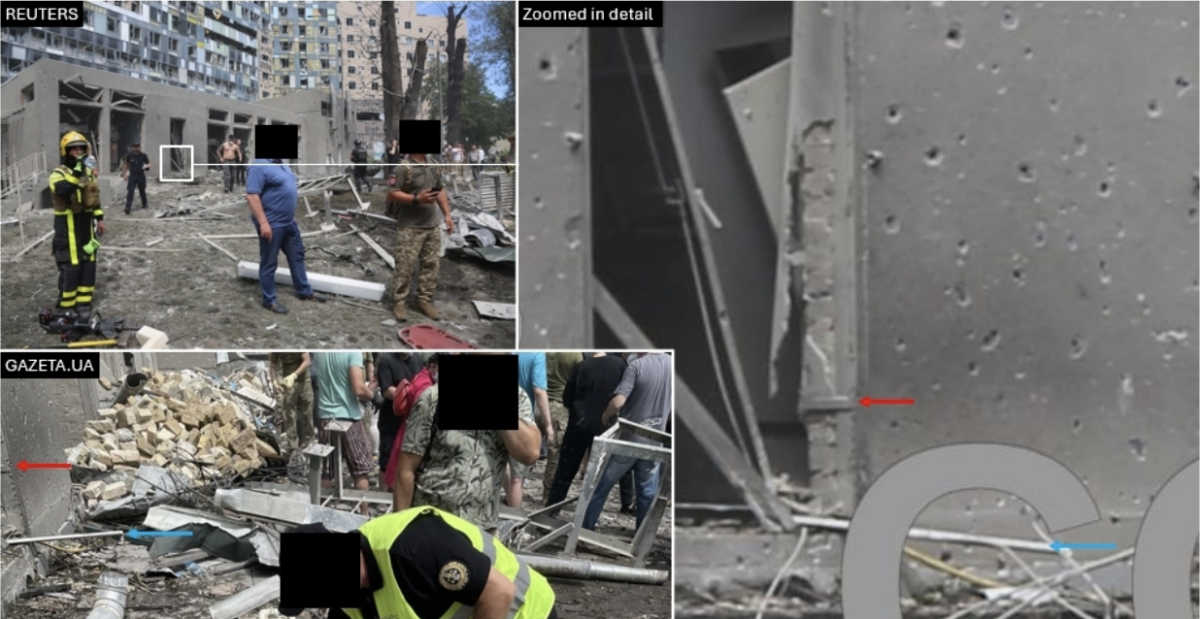
Debunking US Missile Claims
In the aftermath of the explosion, some social media personalities were quick to claim that the missile was not of Russian origin.
Jackson Hinkle, a political activist who has appeared on Russian state media, was one of the individuals who made the incorrect claim that the missile was US-made.
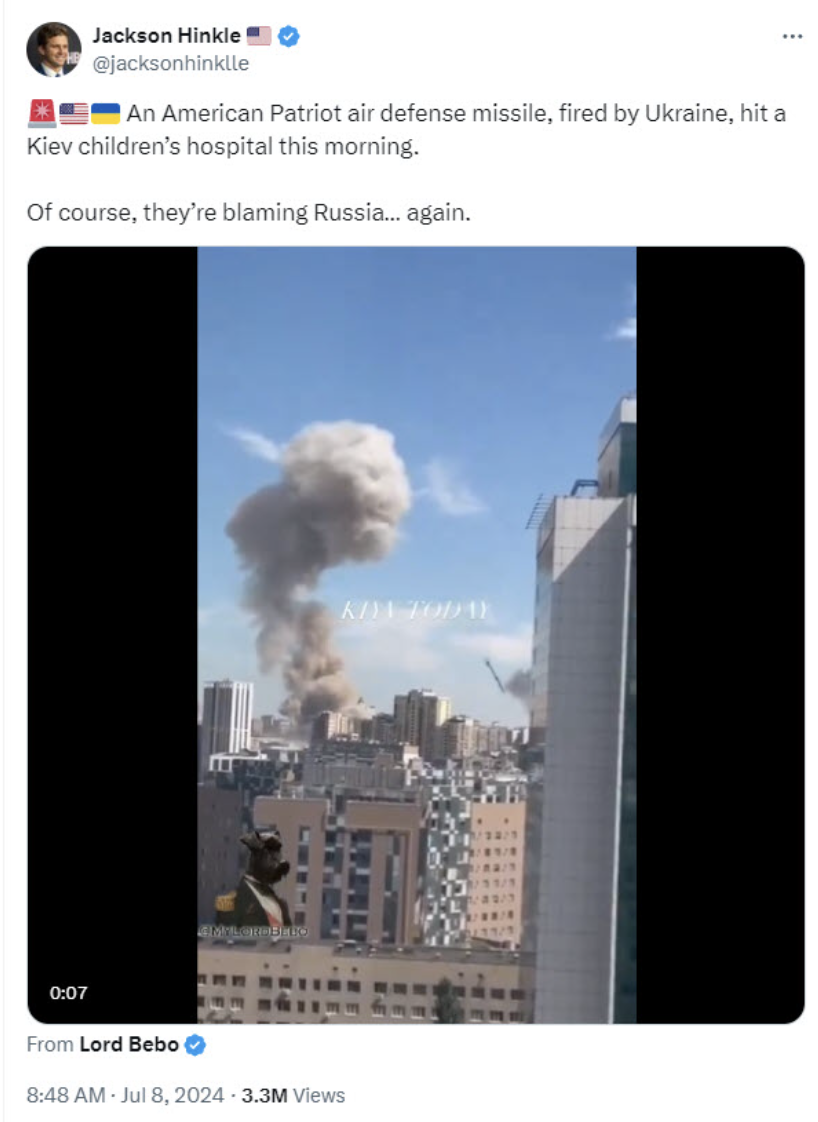
Hinkle has been banned from several social media platforms for spreading false information.
Similarly, War on Fakes — widely regarded as a Russian propaganda and disinformation outlet — claimed in a visual analysis that given the length-to-width ratio of the missile, it could not be a Kh-101, but instead an AIM-120 fired from a Ukrainian NASAMS battery. The AIM-120 is produced by the U.S. defence contractor Raytheon Company.
The claim that the missile was an AIM-120 ignores the jet engine prominently hanging from the empennage of the missile that hit the hospital. This highly visible feature is present on the Kh-101, but not on the AIM-120. Furthermore, the wings in the mid-section of the missile that hit the hospital are a mismatch for those on an AIM-120.
At the time of writing this article, War on Fakes’ Telegram post had nearly 800k views, and thousands of shares.
In a follow-up post, War on Fakes claimed that higher quality stills had been edited to make the jet engine of the Kh-101 more prominent, and that in fact the video had shown an AIM-120. However, the jet engine was still visible in lower quality versions of the video, including the ones used in the analysis in this article.
Another Telegram account, ves.rf (ВЕСЪ.РФ), which has more than 56,000 followers, also made a post attempting to exonerate Russia for the attack. The post, which had been viewed more than 440,000 times and which had been widely reposted on X/Twitter, also claimed that the missile that struck the hospital was an AIM-120.Simultaneously, ves.rf also provided cover for the strike by stating that the children’s hospital was directly next to the Ukrainian State Aviation Service. This would seem to undermine its earlier claims it was not a Russian missile that hit the hospital. .
Nevertheless, Bellingcat created a second 3D model to represent an AIM-120 missile to test this theory. When comparing this model to images of the missile that hit the hospital, factors like the forward fins of the AIM-120 not matching were apparent. Additionally, the nose of the AIM-120 is much sharper than that of the missile in the hospital strike video. Perhaps most noticeable is the absence of any component on the AIM-120 matching the jet engine seen at the rear of the missile in the video.

The difference between the features of the AIM-120 and the missile that hit the hospital are also noticeable in this video overlay.
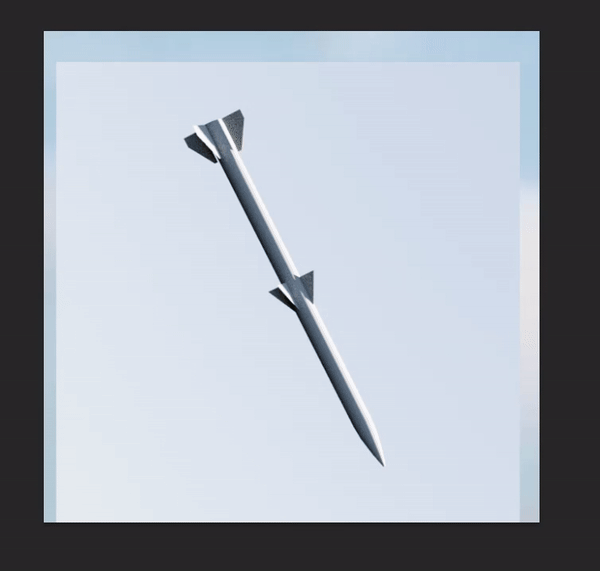
The hospital was far from the only target during the Russian attack of July 8. At least twenty people were killed in strikes across Kyiv alone, with city mayor Vitali Klitschko saying that almost 100 had been injured.
In total, at least 41 people were killed across the country as Russian missiles fell on several cities aside from Kyiv, including Kryvyi Rih and Dnipro.
This latest wave of Russian attacks against Ukraine is among the largest and deadliest in months. Most recently, the Russian armed forces launched hundreds of missiles and drones at cities across Ukraine on December 29 2023 and then on January 2 2024, killing dozens of people and injuring hundreds.
Bellingcat is a non-profit and the ability to carry out our work is dependent on the kind support of individual donors. If you would like to support our work, you can do so here. You can also subscribe to our Patreon channel here. Subscribe to our Newsletter and follow us on Twitter here and Mastodon here.
如有侵权请联系:admin#unsafe.sh
